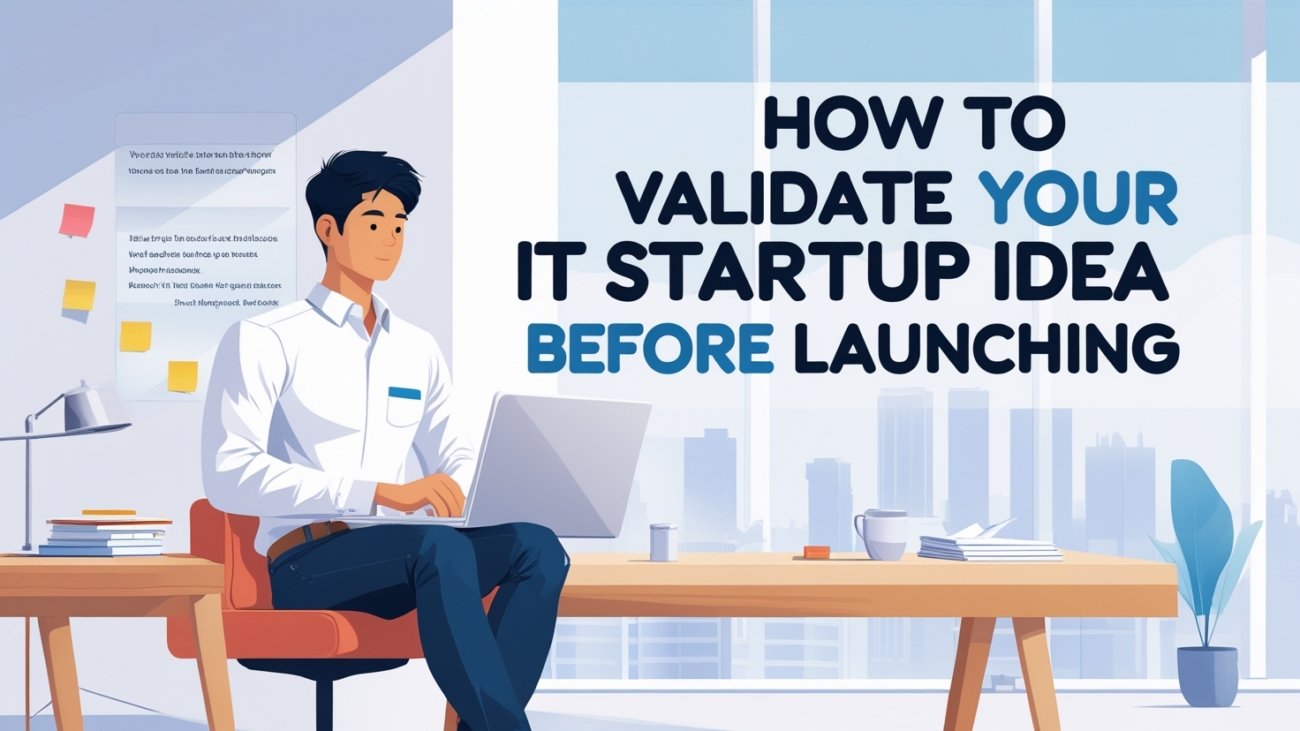
Launching an IT startup is an exhilarating venture, but the road to success is paved with careful planning and validation.
Before investing time, money, and energy, validating your idea ensures it solves a real problem and has market potential.
1. Define the Problem with Crystal Clarity
Every successful IT startup begins with a well-defined problem.
Vague ideas like “an app for productivity” won’t cut it.
Instead, pinpoint a specific pain point, such as “small businesses struggle to manage cloud-based inventory in real time.”
Clarity attracts focus and guides validation.
For example, Dropbox succeeded because it addressed the precise issue of seamless file syncing across devices.
Actionable Tip:
Write a one-sentence problem statement: “Who faces what specific issue, and why is it frustrating?”
Test it with 5–10 people in your target audience to confirm it resonates.
2. Conduct Lean Customer Discovery
Validation starts with people, not code.
Engage potential users through “Customer Discovery Interviews” to understand their needs and behaviors.
Avoid pitching your idea initially; instead, ask open-ended questions about their current solutions, frustrations, and wish lists.
This approach helped Slack pivot from a gaming platform to a communication tool by listening to user feedback.
Actionable Tip:
Interview 15–20 potential customers (e.g., via LinkedIn, X, or local meetups).
Ask: “What tools do you use for [task]?” “What’s the biggest challenge with them?” Summarize patterns to refine your idea.
3. Map the Competitive Landscape
The IT space is crowded, so understanding competitors is critical.
Go beyond obvious players like Google or Microsoft.
Use tools like Crunchbase or Product Hunt to identify niche startups addressing similar problems.
Analyze their strengths, weaknesses, and customer reviews to find gaps your solution can fill.
For instance, Zoom carved its niche by prioritizing user-friendly video conferencing over complex enterprise tools.
Actionable Tip:
Create a “Competitor Matrix” with columns for features, pricing, target audience, and user pain points.
Identify one unique angle your startup can own, like affordability or a specific feature.
4. Build a Low-Fidelity Prototype
Before coding a full product, create a low-fidelity prototype to test your concept.
Use no-code tools like Figma, Bubble, or even a PowerPoint mockup to simulate your product’s core functionality.
The goal is to visualize your solution and gather feedback without heavy investment.
Airbnb’s founders started with a simple website to test their home-sharing idea.
Actionable Tip:
Design a prototype showcasing your top three features.
Share it with 10 potential users and ask: “Would you use this?
Why or why not?” Iterate based on their input.
5. Run a Smoke Test for Demand
A smoke test measures real-world interest without a finished product.
Create a landing page describing your solution, its benefits, and a call-to
action (e.g., “Join the Waitlist”).
Use tools like Carrd or Wix to build it quickly, then drive traffic via targeted ads on Google or posts on X.
This tactic helped Buffer validate its social media scheduling tool by tracking sign-ups.
Actionable Tip:
Launch a landing page in one week. Spend $50–100 on ads targeting your audience.
Aim for 100+ visitors and track conversion rates. A 5–10% sign-up rate signals strong interest.
6. Test Pricing with a Pre-Sale Strategy
Pricing validation ensures your idea is financially viable.
Offer a pre-sale or early-bird discount to gauge willingness to pay.
Use a platform like Gumroad or Stripe to collect pre-orders without a fully built product.
This not only validates demand but also generates early revenue.
Pebble’s smartwatch gained traction through a Kickstarter campaign that validated its pricing model.
Actionable Tip:
Add a “Pre-Order Now” button to your landing page with a discounted rate.
Offer a clear value proposition, like “Get lifetime access for $99.”
Track pre-orders over two weeks to assess pricing appeal.
7. Leverage a Feedback Loop for Iteration
Validation is iterative.
Collect feedback from interviews, prototypes, and smoke tests, then refine your idea.
Look for recurring themes — features users love, concerns they raise, or unexpected use cases.
Canva’s early success came from iterating based on user suggestions for simple design tools.
Actionable Tip:
Create a feedback tracker in a spreadsheet with columns for source (e.g., interview, landing page), comment, and action.
Update your idea weekly based on insights, then retest with users.
8. Assess Scalability and Feasibility
Finally, evaluate if your idea can scale.
Consider technical feasibility (can it be built with current resources?), market size (is the audience large enough?), and operational needs (can you deliver consistently?).
Use online resources or consult a mentor to estimate costs and timelines.
This step prevents you from chasing an idea that’s too niche or resource-intensive.
Actionable Tip:
Draft a “Feasibility Checklist” with questions like: “What’s the estimated development cost?”
“How many users can I realistically reach in year one?”
If red flags arise, pivot or narrow your focus.
Conclusion
Validating your IT startup idea is like building a bridge — each step strengthens your foundation for success.
By defining the problem, engaging users, testing demand, and iterating relentlessly, you minimize risks and maximize impact.
Start small, stay curious, and let data guide your journey.
With these strategies, you’re not just launching a startup — you’re building a solution the world needs.

